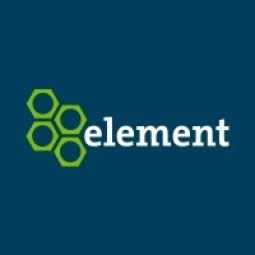Product
- Accident Service
- Acquisition Service
- Financing Service
- Maintenance Service
- Personal Usage & Expense Tracking Service
- Remarketing Service
- Risk & Safety Service
Tech Stack
- Online Reporting Tools
Implementation Scale
- Enterprise-wide Deployment
Impact Metrics
- Cost Savings
- Customer Satisfaction
- Employee Satisfaction
Technology Category
- Functional Applications - Fleet Management Systems (FMS)
Applicable Industries
- Consumer Goods
Applicable Functions
- Logistics & Transportation
Use Cases
- Fleet Management
Services
- System Integration
About The Customer
The customer is a company in the consumer goods industry. They have a total fleet size of 270 vehicles, which are used for sales purposes. The company was previously working with a different fleet management company but was dissatisfied with the declining service levels. The drivers were not receiving the necessary support to keep their vehicles on the road and in compliance. As a result, the company initiated an RFP process to review the products and services provided by other major fleet management companies.
The Challenge
The customer, a company in the consumer goods industry, was experiencing declining service levels with their current fleet management company. Their drivers were not receiving the level of customer service and support they required to keep them and their vehicles on the road and in compliance. The customer initiated an RFP process to review products and services provided by major fleet management companies to improve their service levels.
The Solution
The customer selected Element Fleet Management based on RFP responses and demonstrated service levels. The customer enrolled in several services and was impressed with the implementation team and the entire onboarding process. Customer service levels improved dramatically and the customer had clear visibility into their total fleet expenses through Element’s online reporting tools. Element works closely with the fleet manager to administer the fleet program and ensure drivers’ needs are being met while saving the customer time and money on its fleet. Based on recommendations from Element, the customer moved from non-required SUVs to safer, more cost efficient 4WD sedans.
Operational Impact
Quantitative Benefit

Case Study missing?
Start adding your own!
Register with your work email and create a new case study profile for your business.
Related Case Studies.
.png)
Case Study
Improving Vending Machine Profitability with the Internet of Things (IoT)
The vending industry is undergoing a sea change, taking advantage of new technologies to go beyond just delivering snacks to creating a new retail location. Intelligent vending machines can be found in many public locations as well as company facilities, selling different types of goods and services, including even computer accessories, gold bars, tickets, and office supplies. With increasing sophistication, they may also provide time- and location-based data pertaining to sales, inventory, and customer preferences. But at the end of the day, vending machine operators know greater profitability is driven by higher sales and lower operating costs.

Case Study
Series Production with Lot-size-1 Flexibility
Nobilia manufactures customized fitted kitchens with a lot size of 1. They require maximum transparency of tracking design data and individual processing steps so that they can locate a particular piece of kitchen furniture in the sequence of processes.

Case Study
American Eagle Achieves LEED with GE LED Lighting Fixtures
American Eagle Outfitters (AEO) was in the process of building a new distribution center. The AEO facility management team decided to look at alternate options for lighting layout that could provide energy and maintenance savings. AEO would need a full-time maintenance employee just to replace burned-out fluorescent tubes.

Case Study
Revolutionizing Rodent Control
From pet- and child-safe traps, to touch-free and live-catch rodent control solutions, Victor continues to stay committed to producing superior products that meet the varying needs of today’s pest control professionals. And, with a long standing history supporting customers in the food processing, service, and retail settings, Victor knew that strict regulations were costing organizations thousands of dollars in excess overhead trying to manage their rodent-control solutions. Trap inspections in these environments are often difficult and time consuming, requiring personnel to manually check a trap’s status multiple times per day, amounting to over six hours of manual labor. Victor is looking for an innovative way to increase operational efficiencies with the use of technology.





